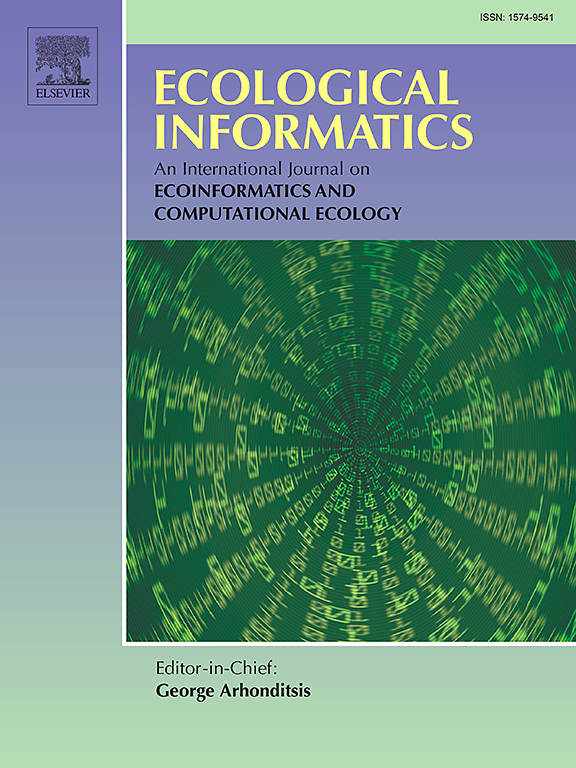Exploring the feasibility of GF1-WFV data in estimating SPAD using spatiotemporal fusion algorithms
IF 5.8
2区 环境科学与生态学
Q1 ECOLOGY
引用次数: 0
Abstract
Remote sensing technology provides an effective means for continuously assessing the chlorophyll content in plants on a broad scale. Given the challenges associated with satellite image quality and spatiotemporal resolution, spatiotemporal fusion algorithms for estimating vegetation chlorophyll content have garnered significant attention in recent years. In this study, we evaluated the performance of four fusion algorithms fusing Gaofen-1 WFV and MODIS data while also exploring their fusion accuracy. A random forest regression model was developed using the fused images and measured SPAD (Soil and Plant Analyzer Development) values, enabling large-scale, accurate, and dynamic monitoring of vegetation chlorophyll content. The results indicate that (1) all four fusion algorithms can effectively address the issue of missing images; (2) the constructed random forest regression model accurately estimates SPAD values; and (3) among the three vegetation indices that exhibit a strong correlation with SPAD values, the fusion strategy “Index-then-Blend” outperforms “Blend-then-Index.” This study provides comprehensive insights into dynamic and large-scale monitoring of vegetation chlorophyll content, particularly in scenarios in which satellite imagery is unavailable.
求助全文
约1分钟内获得全文
求助全文
来源期刊

Ecological Informatics
环境科学-生态学
CiteScore
8.30
自引率
11.80%
发文量
346
审稿时长
46 days
期刊介绍:
The journal Ecological Informatics is devoted to the publication of high quality, peer-reviewed articles on all aspects of computational ecology, data science and biogeography. The scope of the journal takes into account the data-intensive nature of ecology, the growing capacity of information technology to access, harness and leverage complex data as well as the critical need for informing sustainable management in view of global environmental and climate change.
The nature of the journal is interdisciplinary at the crossover between ecology and informatics. It focuses on novel concepts and techniques for image- and genome-based monitoring and interpretation, sensor- and multimedia-based data acquisition, internet-based data archiving and sharing, data assimilation, modelling and prediction of ecological data.
 求助内容:
求助内容: 应助结果提醒方式:
应助结果提醒方式:


